I made my third circuit around Paris the other day. The first, a few years ago, was on foot, over 16 weekend days. The second, just after the second COVID lockdown ended last fall, was by bike.
This trip was on the Paris tram system, which encircles almost all of the city. Unlike the Metro, the high-tech cars run above ground, with big windows for views. And they smell good. Unlike the bus, signaling allows them to go through some red lights.
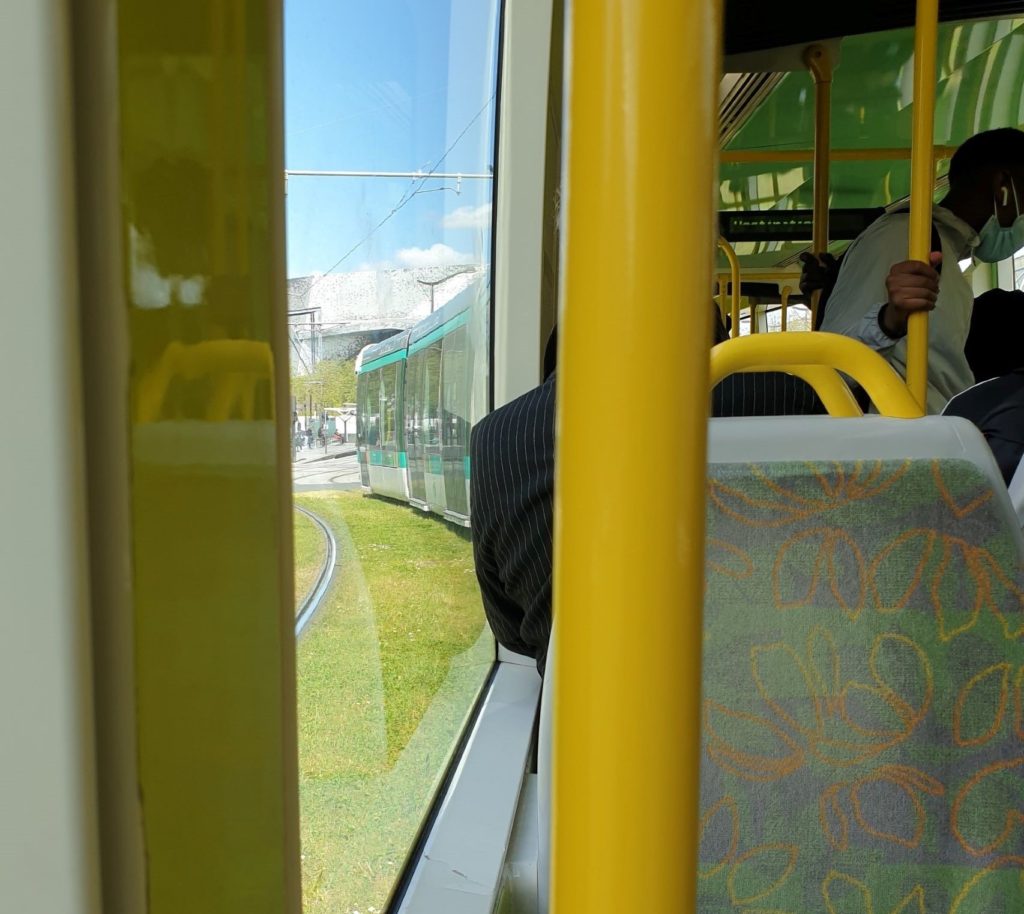
The route around Paris is just one of the region’s tramway routes; other lines connect Parisian suburbs with each other. The idea, as in many other cities, is to serve passengers – often low-income – who don’t follow the typical in-out urban commuting trajectory. The lines of what is called here le tramway together carry 900,000 passengers a day between their 212 stations, in normal times.
The two lines around Paris follow the Maréchaux, the broad boulevards named mostly after Napoleon’s marshals. The stops, though, reflect a more modern history. I counted at least 10 stations named after women, including Ella Fitzgerald and Rosa Parks.

At the Rosa Parks stop, I couldn’t resist asking the Black teenager sitting next to me if he knew who she was. “Yes of course,” he said politely. “She wouldn’t get off the bus.”
The Paris I saw out the window of the three-hour trip was vibrant and modern, if not always as attractive as the center city. There were numerous examples of the what-were-they-thinking type of French architecture.
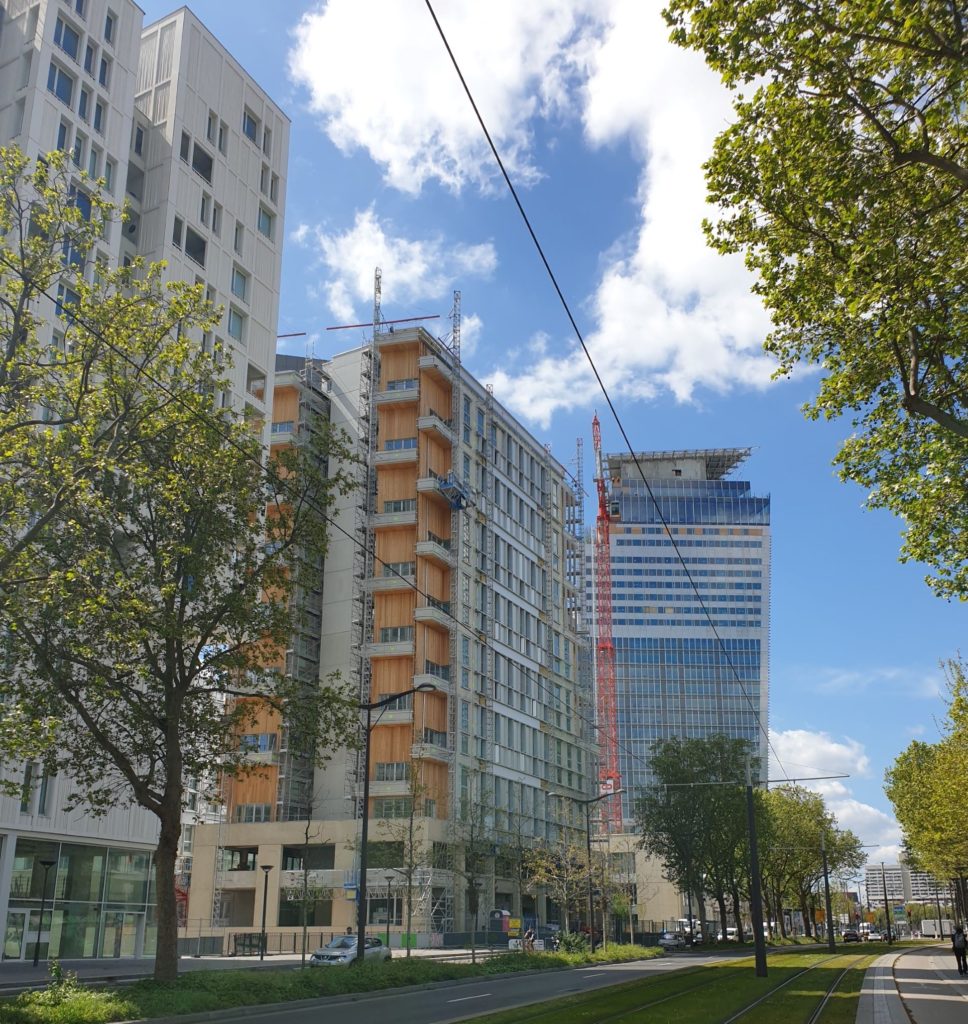
Other innovative notes to the tram: Many of the stops are announced over the loudspeaker in a child’s voice in addition to the regular one, and each has its own musical identity. You can listen to them here. Thanks to Benjamin Chadwick and his blog for pointing this out.
I was fresh from a month in the U.S., where I’d been able to move about freely and even go to restaurants, so it felt good to clock some kilometers. There will soon be more places to go: On May 19 restaurants and cafes, closed since October, will be allowed to open for outdoor service. Museums and theaters will reopen for the first time in more than a year, as will “non-essential” shops.

All this future freedom is dizzying. But it’s also dangerous. President Emmanuel Macron says the loosening will only be allowed if the pandemic is under control, and right now new cases are running at about 20,000 a day. That’s half the rate of the U.S. — which has five times the population. But Macron has never pulled back from an announced reopening and I bet he won’t this time.
Vaccinated and masked, I had no worries on my ride, even as the car filled up. People generally kept to themselves.
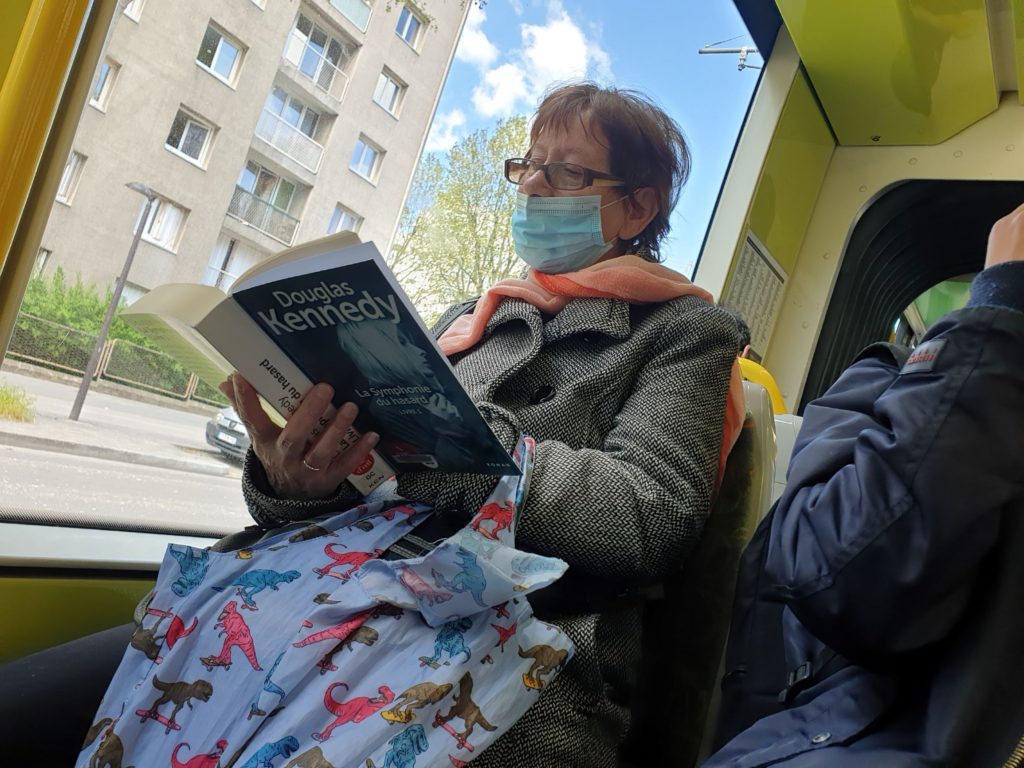
I got a chance to see some unusually named commercial establishments (It appears from this to be a hair salon):
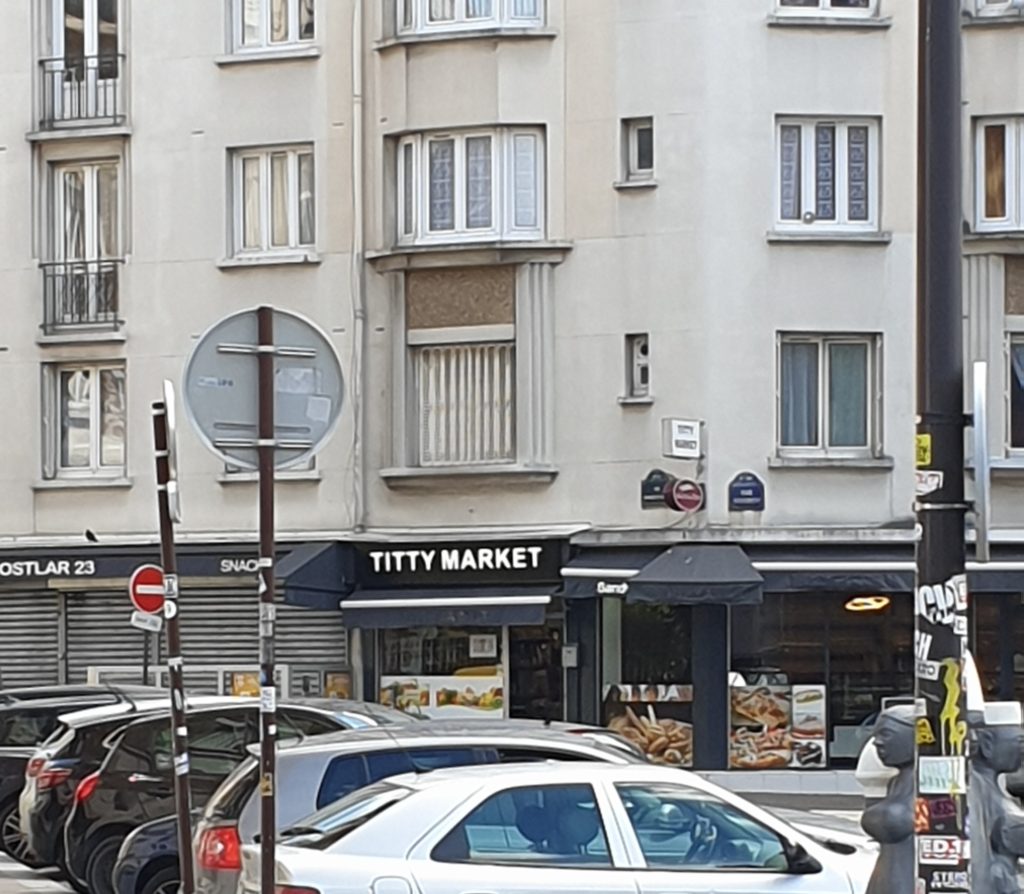
Another was the restaurant below, my first sighting of a French tacos vendor. It’s really embarrassing after Lauren Collins’s terrific piece on le tacos in The New Yorker. Embarrassing, that is, because before that I’d never even heard of this cultural phenomenon.
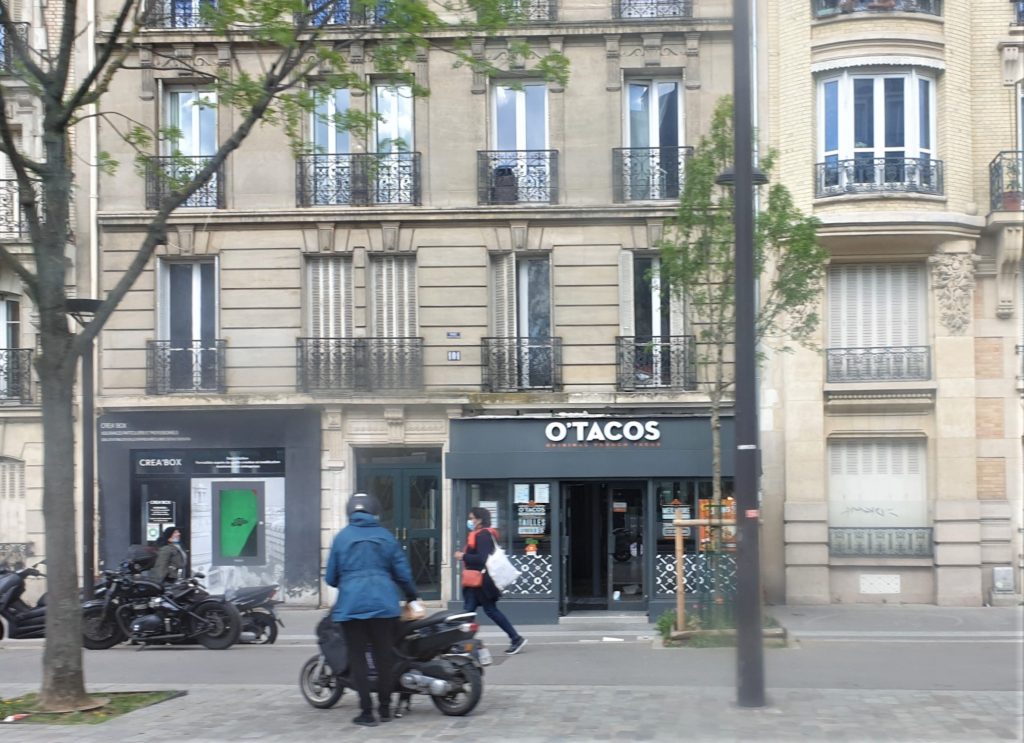
I was also embarrassed when I failed to change trains correctly at the Porte de Vincennes, where the the north-south tram line split to avoid disrupting east-west auto traffic. Suddenly, I was heading back the way I had come rather than continuing south. It was a helpful reminder that although I style myself as someone who explores the edges of the city, I have a lot to learn.
It’s clear that the ring-road tram has spawned development. In addition to numerous shopping malls and cinemas, two cabinet ministries, Defense and Justice, have recently set up along the Maréchaux. Defense is in the south and Justice is a series of stacked glass shoe boxes in the north.
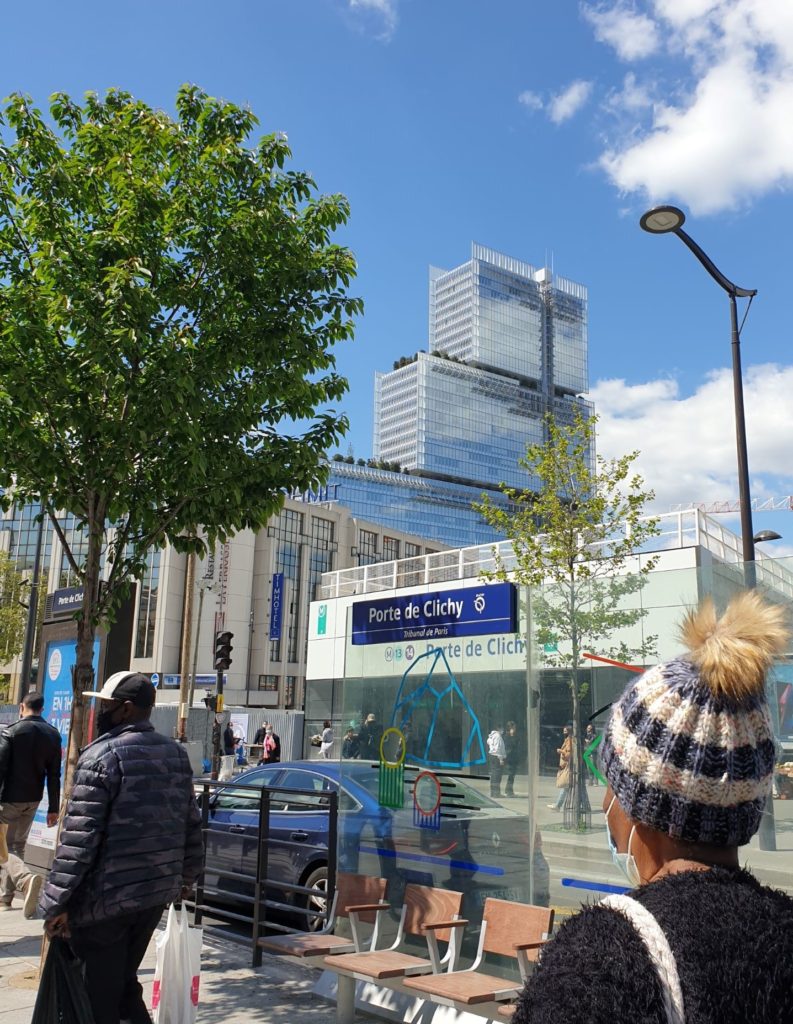
The lines are only now being extended to the richer, western side of Paris, so the last stage of my voyage was on the bus. It took a long time – mostly because tramway construction jammed the road much of the way.
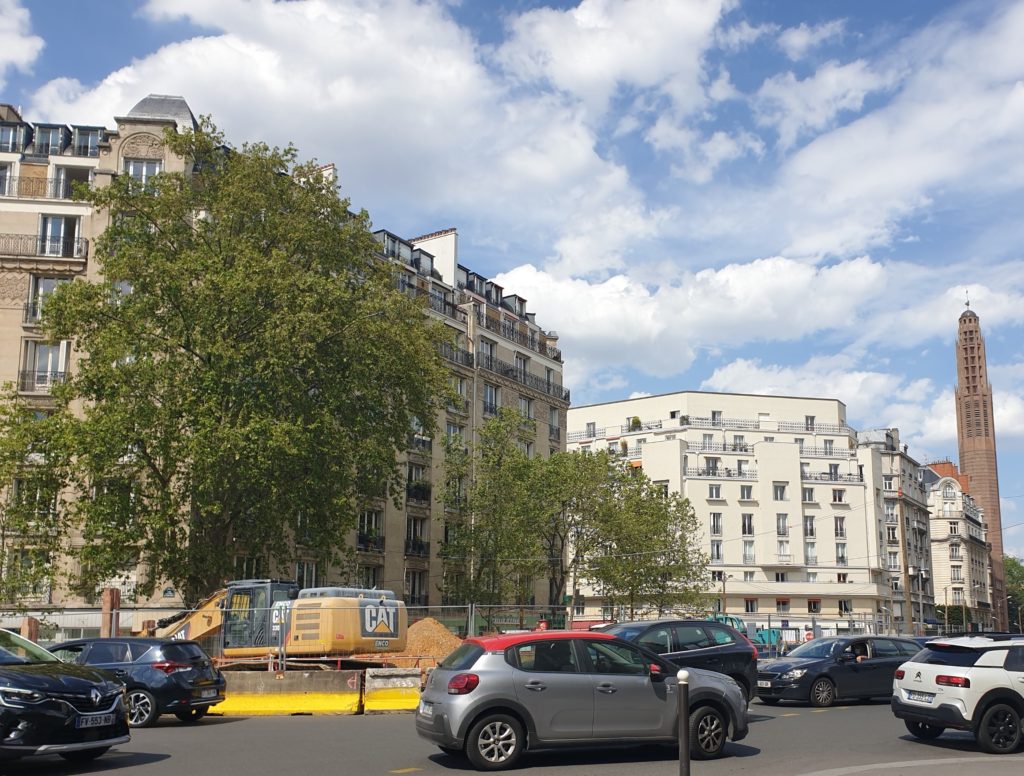
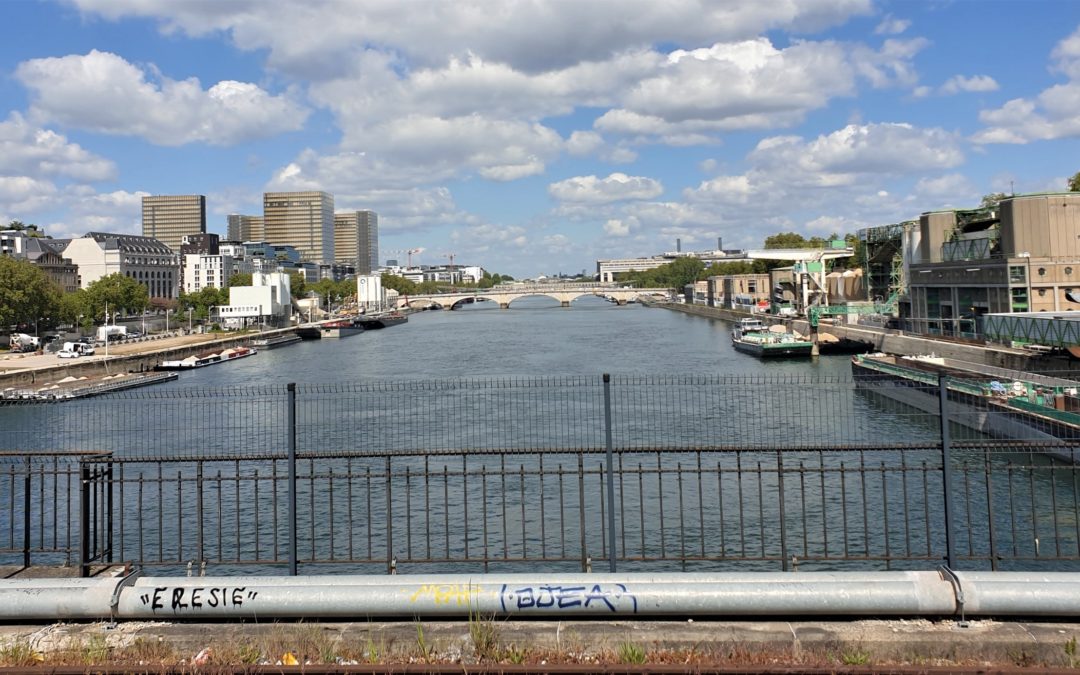
Love your reference to Rosa Patks. I drive on Rosa Paks in Nashville very often. I enjoy reading about your experiences in Paris.
I had no idea there was one in Nashville! I wonder where else. I’m so glad you enjoy it.
This was delightful, Anne. Loved the pictures and the detail about the neighborhoods.
Thanksso much, I’m really glad you enjoyed it!
I love to take that trip around Paris. I’m hungry for it.
It’s a date!
A lovely adventure. Thanks!
You are very welcome!
I so love these updates! A huge merci bien!
You are so very welcome, I’m really glad you enjoy reading them!
Sorry Rosa Parks
Great article! I love the idea of following the route on foot, by bike and by tram. And thanks for the shout-out!
They’re extending the 3b as far as Porte Dauphine, but it’s unlikely they’ll ever fully close the circle. The 16th arrondissement is rather “suburban” in nature (in the Anglo-Saxon sense of the word): less densely populated, richer, and more car-oriented than the rest of Paris. A BRT (bus rapid transit) line has been proposed instead; this would have a lower capacity, but still benefit from priority at traffic lights if they do it right.
That’s great to know! I had wondered how they’d lay the track through those fancy neighborhoods. Perhaps a bit of NIMBY is at work?
Yes, I think so! But I also read that the transport authority doesn’t think there’d be enough ridership to justify trams on that section. I can’t help thinking it’s a shame though.